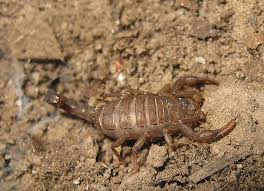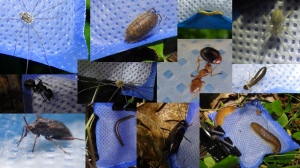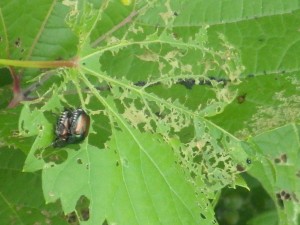Pregnant Scorpions
I earned my MS degree in Tennessee, where I studied the effects of gravidity (pregnancy) on Arizona scorpion (Vaejovis cashi and V. electrum) thermal selection and retreat site selection. Scorpions are an important intermediate predator that interact with over 250 taxa; any alteration in their population size or structure caused by increased temperatures could impact many other species. Although scorpions did not exhibit thermal selection in response to reproductive characteristics, they did show a preference for large rocks that had stable thermal profiles. Thus, by behaviorally selecting for larger rocks, they may be able to temporarily tolerate warming. See Publication.
Water Stress in Mesic Ohio
Trophic interactions can be influenced by variations in water availability – a key resource for terrestrial life. Specifically, water stressed animals may increase food consumption to meet water, rather than energy or nutrient, demands. Urbanization in cool, mesic climates tend to increase local temperatures and reduce water availability; however, the frequency of invertebrate water stress in urban areas is largely unknown. Our data suggests that terrestrial invertebrates regularly experienced water stress in urban northwestern Ohio, and consumption patterns could be altered as a result. This could be important for pest management in urban, residential, and agricultural settings. See local newspaper article.
Arthropod Foraging
Terrestrial arthropod populations can be directly influenced by a habitat’s abiotic characteristics at small and large scales. Microclimate (e.g., temperature, soil moisture) can alter an arthropod’s metabolism and its need for food, but also influence water loss rates and thus its need for water. Previous research by Kevin McCluney has shown that altered water balance can cause increased consumption of moist food to meet water, rather than energy or nutrient, demands. However, if handling time (i.e., ability to eat food within a certain time frame) is too great, arthropods may wish to alter their feeding habits to gain metabolic water. Lipids produce twice as much metabolic water as Carbohydrates or Proteins; thus, arthropods may select diets high in fat when they are water limited. Through laboratory and field experiments, I investigate whether this behavior can occur and which arthropods exhibit this response. If this behavior can occur, this can change habitat availability and dispersal patterns, which can alter community characteristics like abundance, trophic structure, and biodiversity. Given that these community characteristics can be important for pest management, a deeper understanding of the frequency of arthropod heat and water stress in diverse land use types could provide many societal benefits.


